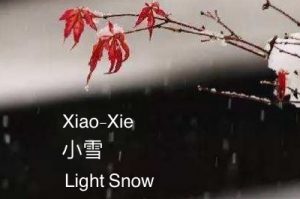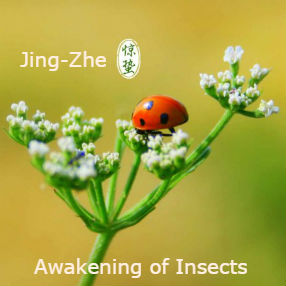
Xiao-Xue (noun) 小雪 (Chinese): Light snow (20th solar term), literally in Chinese “xiao” 小 = little, “xue” 雪 = snow.
Example:
In the ancient Chinese calendar, Xiao-Xue is one of the 24 solar terms which later spread to many Asian countries. The traditional Chinese lunar calendar divides a year into 24 solar terms. Xiao-Xue is the 20th solar term and 10th intercalating month (midpoint). Xiao-Xue begins when the Sun reaches the celestial longitude of 240° and ends when it reaches the longitude of 255°. Xiao-Xue often refers in particular to the day when the Sun is exactly at the celestial longitude of 240°. In the Gregorian calendar, Xiao-Xue usually begins around 22 November and ends around 7 December.
In ancient China, Xiao-Xue was divided into three periods 三候: “There is no rainbow in the first period ; 虹藏不见 the weather rises in the sky and the yin and yang do not match during the second period 天腾地降; so the weather turns into the cold winter and everything loses vitality in the third period 闭塞成冬.”
Since ancient times, Xiao-Xue has been a solar term for agricultural purposes in the lunar calendar. Xiao-Xue is still remembered and celebrated as a Chinese traditional festival.

